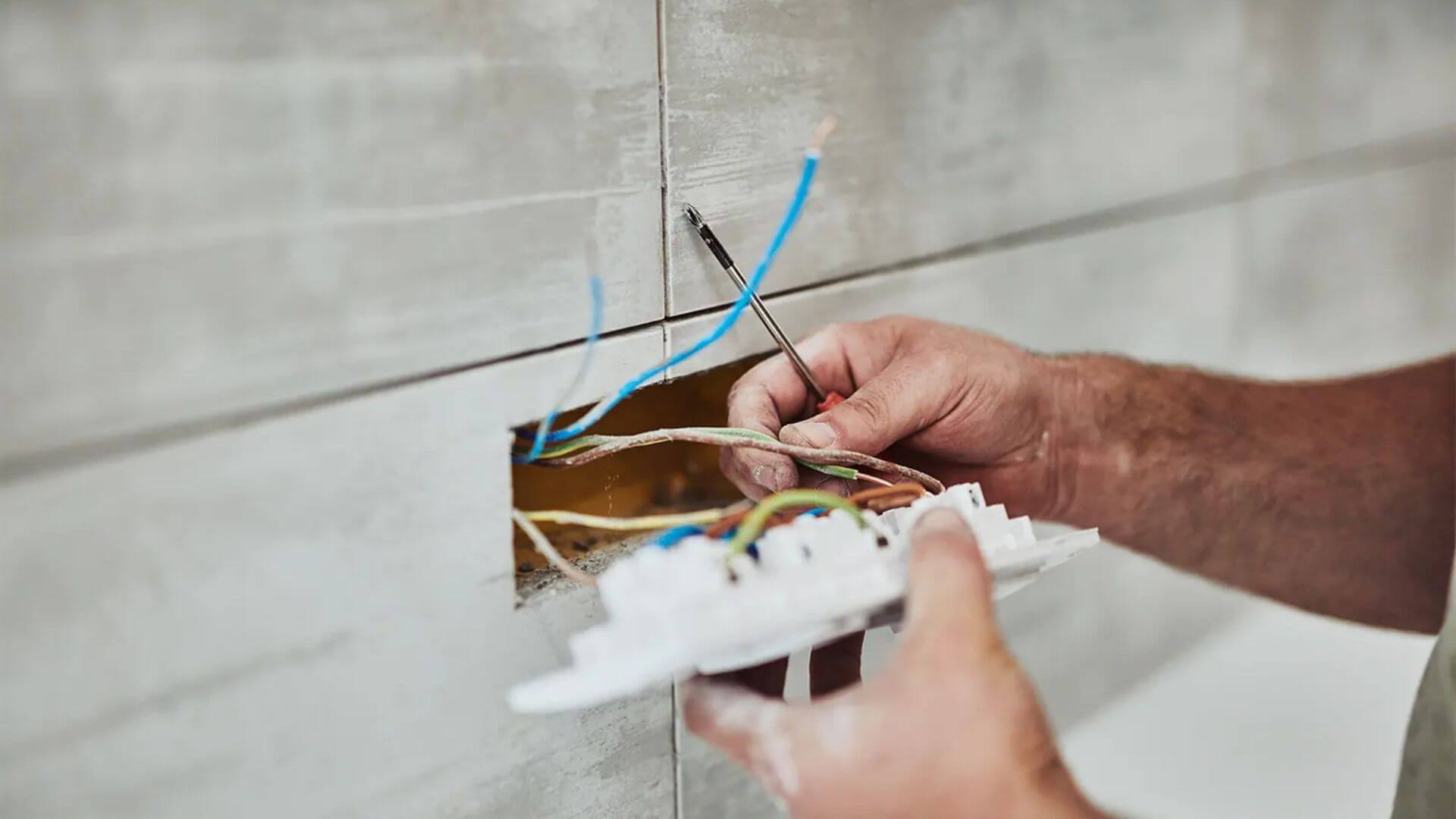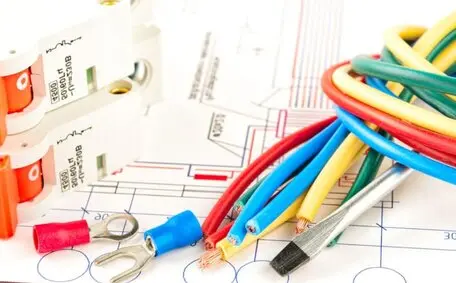Electrical malfunctions are a major cause of house fires every year. The pressing question is: can they be prevented?
Old and outdated wires are often the main culprits behind household electrical fires and fatal electric shocks. More often than not, these incidents occur due to simple negligence.
If you’re reading this guide, it’s likely because you’re a homeowner keen on keeping your house safe. Regularly check your main power outlet and electrical panel, as we recommend, but know that sometimes, more is needed.
![Fixing Faulty Wiring From Power Point 1 Fixing Faulty Wiring Power Point]()
This guide will take you through the six most common signs of wiring malfunctions that you should look for. Without any more delay, let’s see if you have an electrical problem!
Faulty Electrical Wiring: Warning Signs To Look Out For
1. Look Out For Unusual Noises
You would not hear a properly functioning light or electrical outlets making noise. So, if you do, something must be wrong with the electrical wiring, which needs to be fixed. You will often hear a noise when the wiring is outdated and needs to be redone.
If you hear a crackling or sizzling sound, something is seriously wrong, and you should immediately switch off any device connected to the power source. Otherwise, your device may be damaged.
Also, even if it is a light buzzing noise, it is best to call an electrician immediately and resolve the issue.
2. Frequent Trips Of Circuit Breakers
Do you circuit breaker trips frequently? As you must already know, the circuit breaker in your house is designed so that every time there is a power overload, it turns the entire circuit off. It is meant to keep your appliances safe by preventing excess power from flowing through them. So, if you see the circuit breaker tripping more often than usual, there might be a problem.
To give you a rough estimate, call a professional to resolve the issue if you have to fix the circuit board more than once a month.
3. When The Lights Start To Flicker
Do not think there is something supernatural about it every time the light flickers in your house. However, flickering or dimming lights might mean the electrical wiring is malfunctioning!
Flickering light fittings is mostly a sign of bad wiring, and if you do not fix it soon, the chances are that it will damage the light fitting and possibly your electrical system. In that case, you must fix the electrical wiring and replace the light.
4. Locate The Burning Smell
People are usually very cautious in the kitchen, and if they pick up a foul smell, they try to fix the problem, fearing that there might be a gas leak. However, we suggest that you maintain this policy everywhere around the house as a homeowner.
Turn it off immediately if you sense a metallic or distinctly acrid smell around any electronic device. Sometimes, you may even smell something smoky from the built-in appliances.
Remember that a burning smell is not a good sign and should not be ignored. It is a sign that a device is slowly being damaged because of wiring problems, and if left unresolved, it might ultimately damage the appliances.
5. Electric Shocks
This is one of the worst signs of faulty wiring. Touching a light switch might cause a minor electrical shock.
If that happens, immediately turn the device off and plug it out of the power source. Do not use the power source until an electrician fixes the problem.
But when it is severe, and you end up experiencing more than a minor shock, you must immediately seek medical help. Also, if you see someone electrocuted, never try to touch them, as that might put you in danger, too. Instead, turn off the power circuit of the house and seek help immediately.
6. When You See Visible Damages
Sometimes, you do not have to guess something is wrong with the electrical wiring!
For most electronic devices, the parts around the wire are plastic. And when there is an excess power flow, these parts start heating up. The result? You will observe burn marks around the power sources.
The plastic usually melts first, which means it’s time to replace the wiring right away. Should you face this issue, carefully check the wires once the power is off.
This is an easy-to-spot warning sign, as it is right in your eye. We suggest you do not use DIY skills, as you need a trained electrician to fix the problem. So, only do it yourself if you have the right expertise.
Understanding Different Types of Wiring Systems
Electrical Wiring Lifespan
Electrical systems in your home serve as the backbone of your entire electrical framework. They come in different types, each having a specific lifespan and varying tendencies towards faults.
Aluminium Wiring
Throughout the 1960s and '70s, aluminium was commonly used for residential wiring because it was cheaper. However, it’s less durable than copper, expanding and contracting with temperature fluctuations, causing connections to loosen over time and increasing the risk of fires.
Copper Wiring
Copper is the gold standard for residential electrical wiring today. Known for its excellent conductivity and durability, copper wiring can last over 50 years if properly maintained. However, its main drawback is the cost, as it’s considerably more expensive than aluminium.
Knob and Tube Wiring
This is an early type of electrical wiring installed in homes between the 1880s and the 1930s. Though its longevity may seem surprising, knob and tube wiring presents numerous safety risks, including a lack of grounding conductors and susceptibility to physical damage.
Why Some Wiring Systems Are More Prone to Malfunctioning
Age of the Wiring
Older wiring systems like knob and tube wiring are often not equipped to handle the electrical load of modern homes, leading to an increased risk of malfunctions and fires.
Material Quality
The type of material used in the wiring significantly impacts its performance. For instance, aluminium wiring is more likely to oxidize and corrode over time, leading to electrical fires.
Installation Quality
Proper installation is crucial for the longevity and safety of a wiring system. Poor installation can result in loose connections, increased risk of physical damage, and reduced performance of the wiring system.
Maintenance
Routine maintenance and inspections are crucial to ensuring the proper functioning of any wiring system. Neglect can lead to issues going unnoticed and worsening over time, which increases the risk of malfunctions.
With knowledge about different types of wiring systems and their tendency towards faults, you can make an informed decision about your home’s electrical system. When it’s time to replace or upgrade your wiring, remember to consult with a qualified electrician. Safety should always be your priority.
Keeping An Eye Out For Faulty Wiring
That’s all from our side on the signs of faulty electrical wiring.
We hope you had a great time going through this guide. In case you are ever in a pickle like this, you know what needs to be done. The signs in this guide are the biggest giveaways that something is wrong with your home’s electrical wiring.
It is always better to be safe than sorry in situations like this. When you notice any signs, stop immediately and book an appointment with an electrician.
Wiring issues can be dangerous if ignored. However, by watching out for these signs, you’ll be on your way to a quick fix.
If you need help, get in touch with our top local electrician anytime, day or night. Our 24/7 emergency electrical services mean our licensed electricians can fix any wiring issue— whether it’s electrical components, light switches, fixtures, or outlets—keeping you safe from potential fires. We cater to a wide range of electrical needs for your home or business, so feel free to call us anytime!
Keep a watch on this space for more exciting reads. Until next time, bye!
Got More Questions About Faulty Wiring? See Our FAQs
What are some warning signs of faulty wiring in your home?
Faulty wiring in a home can present several signs. These include flickering lights, hot outlets, frequent circuit breaker trips, and the need to use multiple extension cords. If your home’s wiring is releasing heat or causing electrical shocks, it’s crucial to seek professional help immediately.
How does aluminium wiring present a fire hazard?
Aluminium wiring can present a fire hazard due to its tendency to oxidise and corrode when in contact with oxidised metals, leading to overheating. Additionally, aluminium expands and contracts more than copper wiring, which can cause loose connections and potential fire risks.
Why do my lights flicker, and could this indicate a wiring problem?
Flickering lights can be a sign of a wiring issue. If your lights dim when you’re using an appliance, this could indicate a severe problem with the circuit. If you notice persistent flickering, it’s essential to consult with an electrician.
Why are hot outlets a sign of a potential wiring problem?
Outlets that are hot to touch can indicate a wiring problem in your home. This often shows that the wiring releases heat due to overloading or a faulty connection. Hot outlets need immediate attention to prevent potential fire hazards.
What role do Ground Fault Circuit Interrupters (GFCIs) play in preventing wiring issues?
Ground Fault Circuit Interrupters are critical safety devices that can prevent severe electrical shocks. They break the circuit when an imbalance between incoming and outgoing currents is detected. GFCIs can help protect against wiring issues related to water intrusion or damaged insulation.









